

Software Architecture Patterns: Driving Scalability and Performance






The world's most popular streaming giant, Netflix, faced a major breakdown in 2008, causing several days of downtime. Between 2001 and 2008, Netflix subscribers ballooned from 400 thousand to 9.16 million, recording a remarkable rise of 2190%. But this boon became a bane due to the software's inability to handle the massive user base. Thankfully, their swift recognition helped them migrate to a scalable architecture.
Tech giants like Amazon, eBay, and Uber encountered similar issues. They struggled to scale and failed to support a growing consumer base because of a tightly coupled software architectural pattern. They all migrated from traditional monolithic architectures to microservices architectures. However, migration is complex, and it takes time. That's why choosing the right software architecture pattern to support your business growth and future goals is essential.
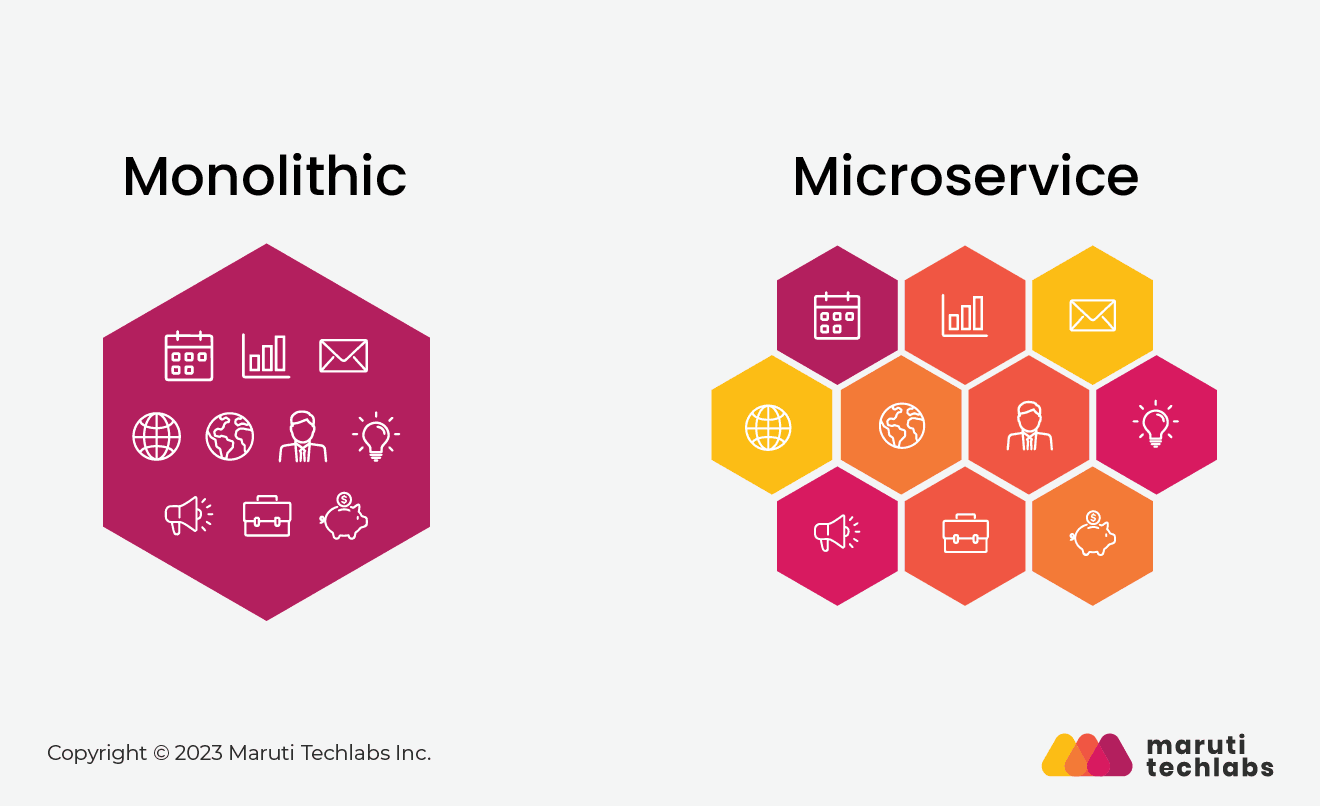
The truth is software scalability and performance have become critical factors in today's digital landscape, where businesses constantly strive for rapid growth. They need applications that can support an unprecedented spike in load without compromising performance. To achieve this, laying the right software architectural pattern is paramount.
At Maruti Techlabs, we understand the importance of laying the right architectural foundation for your application. The right software architecture pattern is the cornerstone for building robust, secure, scalable, and successful software solutions. Our product management consulting services have helped many businesses build scalable, flexible, and robust applications that can withstand time while supporting their growing needs.
In broad terms, architecture is the foundational design that outlines various elements, including its layout, resources, components, and functionalities. All these elements play a crucial role in creating a sustainable framework that can meet the evolving needs of users.
Whether building society or software, you need a robust architectural design to create functional and futuristic ecosystems that can withstand disaster. However, developers often have to deal with repetitive requirements or obstacles. That's where an architectural pattern comes into play!
An architectural pattern is a general, reusable solution to a commonly recurring problem. A software architectural pattern provides a high-level structure for the software, its components, and their interactions to achieve the desired functionality.
Depending on the architectural pattern, you make important decisions regarding its overall structure, relationships between components, data flow patterns, and the mechanism for communication between different parts of the system. In other words, it serves as the backbone of your software.
The importance of software architecture cannot be overstated. A solid architectural pattern is a bedrock for building scalable web applications and software that are reliable and capable of performing under challenging circumstances. It provides a roadmap for the development team, guiding them in making key decisions about the system's design and implementation. Without the right architecture, software projects are prone to issues like poor performance, difficulty in maintenance, and an inability to adapt to changing requirements.
Here are some of the reasons that make software architecture patterns vital for developing sustainable applications:
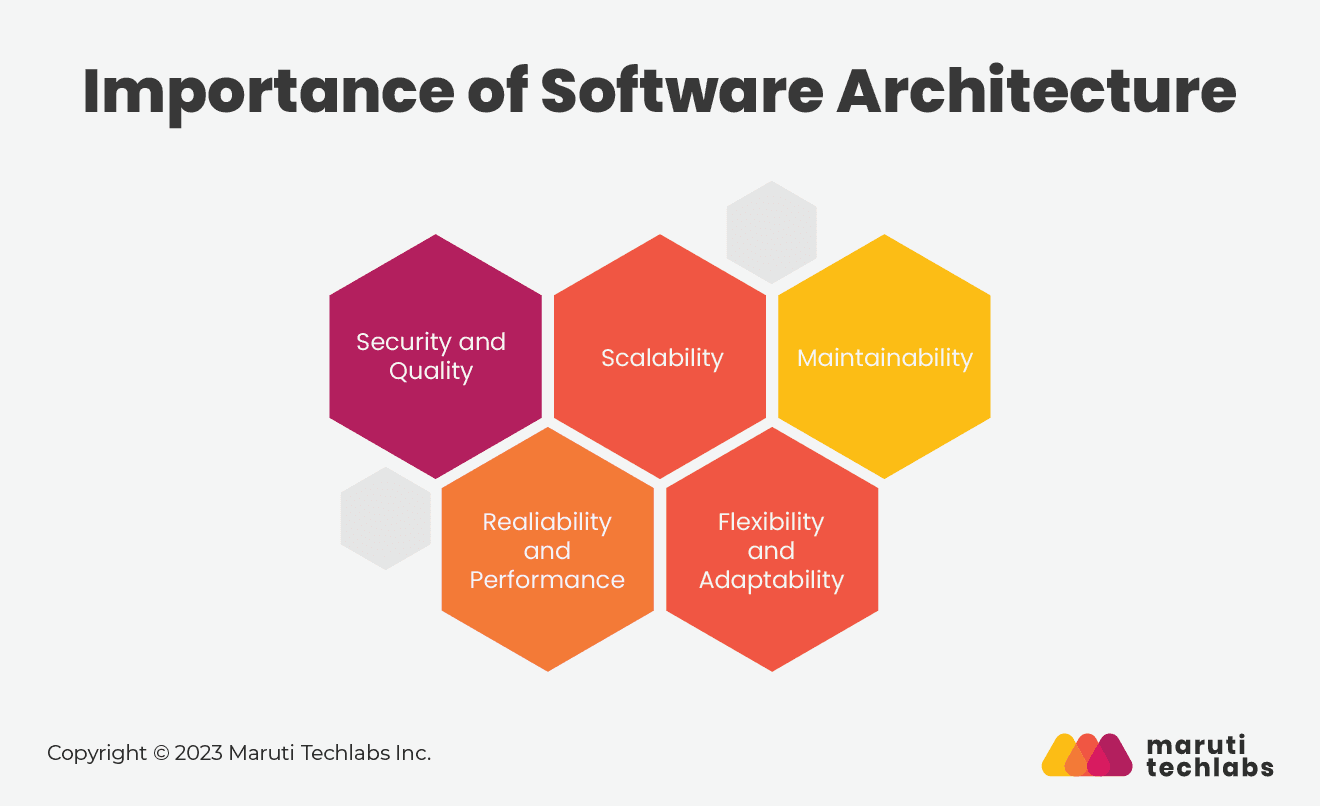
Remember how Netflix was once on the verge of collapsing because it could not handle the overwhelming load? That's why you must choose a well-designed architectural pattern that provides a scalable structure for the software system. It allows the system to handle increasing loads while maintaining peak performance. With the right architecture, your software can support adding new features or components without disruption.
The right architectural pattern makes it easy for the developer to develop, test, deploy, and maintain the software while minimizing the risks. Most modern architecture promotes loose coupling, which makes it easier to understand, modify, and maintain the software system over time. Changes in one component of the system have minimal impact on other parts. It makes adding new features or modifying the software much easier.
Software applications undergo numerous iterations during the development and production cycles. That's why choosing an architectural pattern that provides flexibility and agility is important. It enables easy integration and replacement of components, enabling the software to stay relevant and up-to-date.
The right architectural pattern considers factors like performance, fault tolerance, scalability, and dependability. It helps ensure the software system performs reliably, efficiently, and consistently under varying conditions.
A well-designed architecture can enhance the security of your software by manifolds. The design layout helps you identify potential vulnerabilities and the chances of data breaches at a very early stage. You can thus plan better to mitigate risks and loopholes in the project. Also, developers can build a secure and reliable system by incorporating security best practices into the architecture.
The terms software architecture and design patterns are often used interchangeably. However, there is a slight difference between the two. Architecture patterns address higher-level concerns and provide a framework for organizing the system, while design patterns offer solutions to specific design challenges within that framework.
Here is a detailed outlook on software architecture pattern vs design pattern:
Key Differentiations | Software Architecture Patterns | Design Patterns |
| Scope | Software architecture is decided in the design phase. | Design Patterns are dealt with in the building phase. |
| Abstraction | Software architecture is like a blueprint - a high-level idea of the data flow, components, and interactions between them. | A more detailed design pattern focuses on solving specific design problems within a component. |
| Granularity | It provides a broad view of the system and addresses large-scale components and their interactions. | A design pattern addresses small-scale design issues within a component or a class. |
| Reusability | An architectural pattern can be reused across different projects with similar requirements. | It can be reused within the same project to solve recurring design problems. |
| Relationship | It defines the overall structure, and communication patterns, and organization of components. | It solves common design problems like object creation, interaction, and behavior. |
| Time of Application | An architectural pattern is implemented at a very early stage of the SDLC. | A design pattern is implemented during the coding phase of software development. |
| Examples | Layered Architecture, Client-Server Architecture, Microservices, MVC, etc. | Singleton, Factory Method, Observer, Strategy, etc. |
There are various types of software architecture, each addressing specific design challenges and providing solutions for organizing and structuring software systems. Architects and developers can choose and combine patterns based on their particular project requirements and goals.
Here are some commonly recognized types of software architecture patterns -
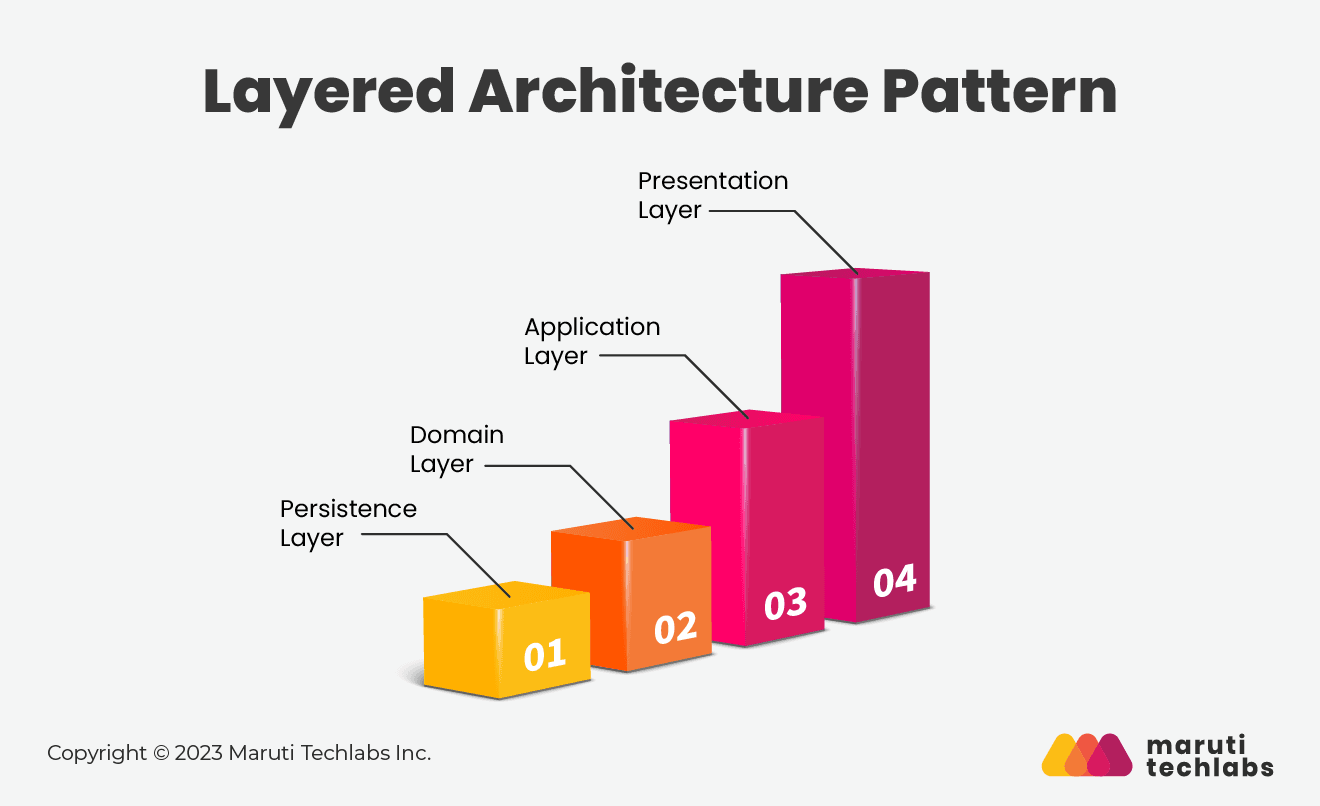
The layered pattern is one of the most frequently used software engineering architecture. The components are arranged in horizontal layers, where one component sits on top of another.
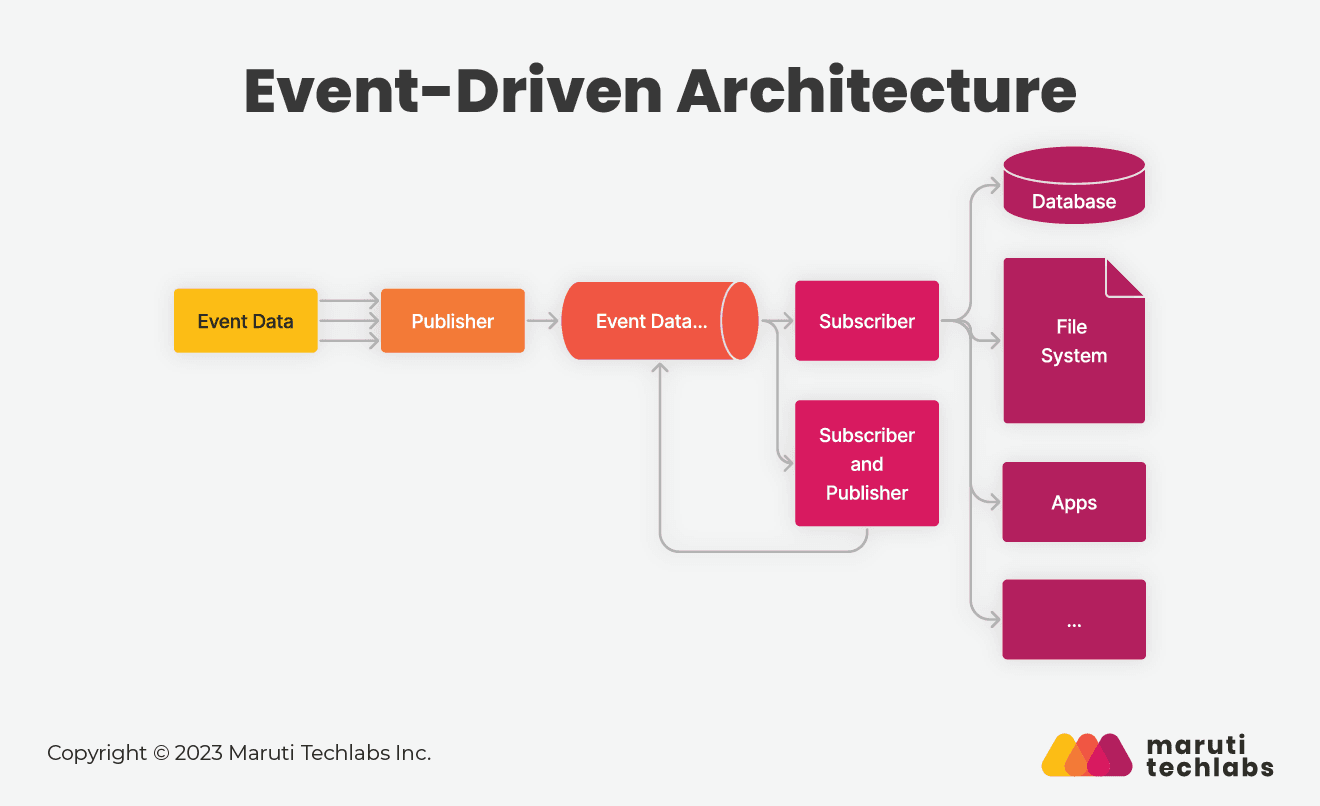
An event-driven architecture pattern revolves around "event" data. The system is made of decoupled components that asynchronously receive and process events. This system's flow of information and processing is based on circumstances.
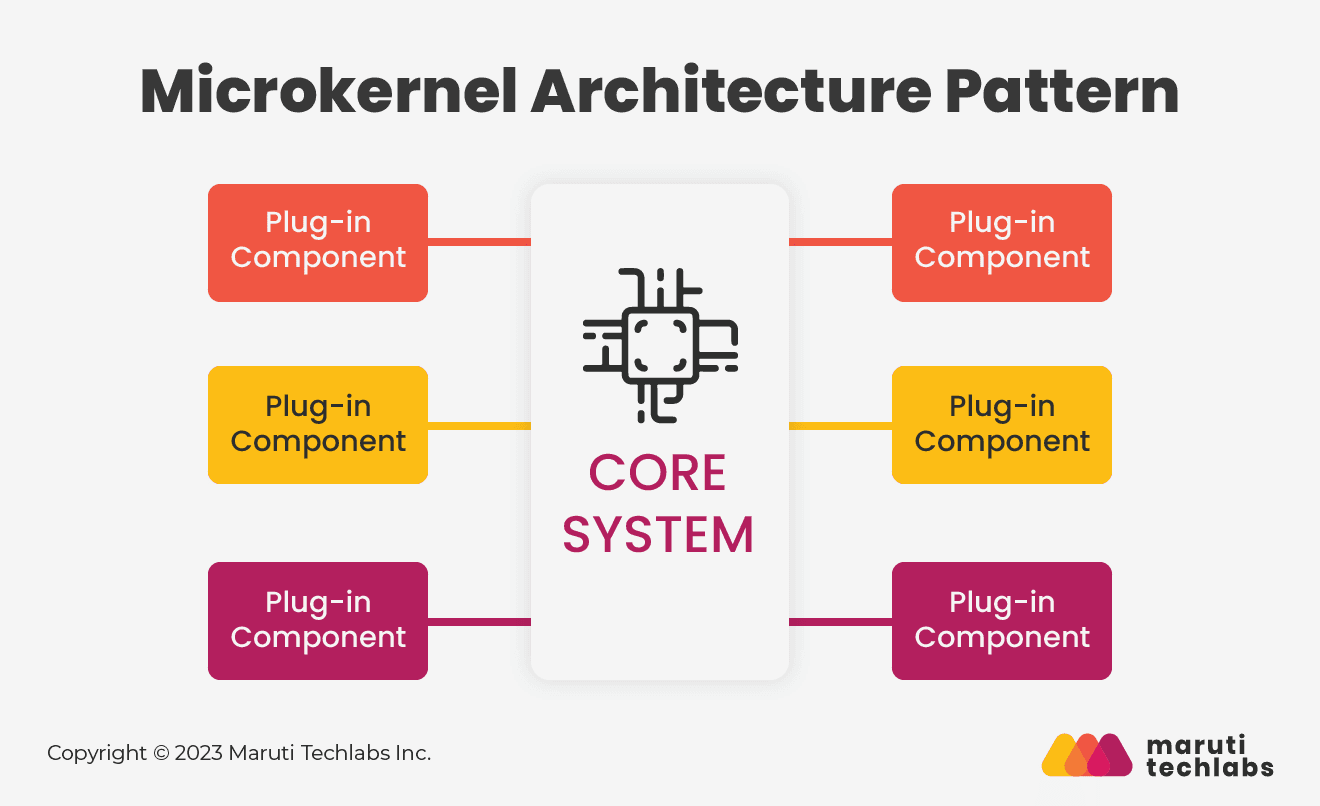
Microkernel, or plugin architecture, is one of the most widely used software architecture patterns in 2022. In this architecture, the system consists of a core and multiple plugins. The core contains a minimal but essential set of services. All additional functionalities are implemented through separate plugins. These plugins do not communicate with each other directly. The microkernel facilitates inter-process communication along with process and memory management.
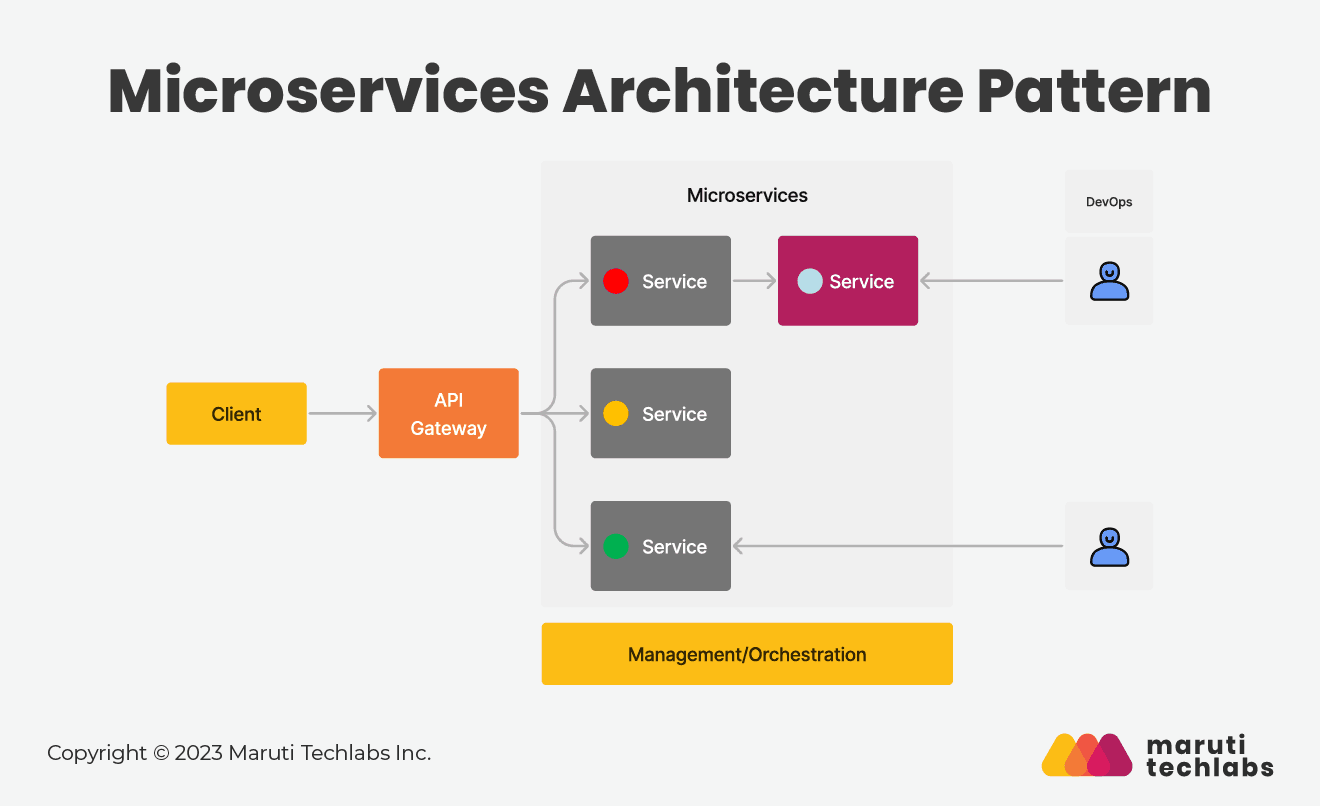
Microservices architecture is one of the best software architecture patterns. This modern approach allows large applications to be split into smaller, independent services. These services are loosely coupled and can be deployed independently. Each service in the architecture is designed to perform a specific business function.
Microservices have grown increasingly popular in the last few years. Leading online companies, including Amazon, eBay, Netflix, PayPal, Twitter, and Uber, have migrated to microservices.
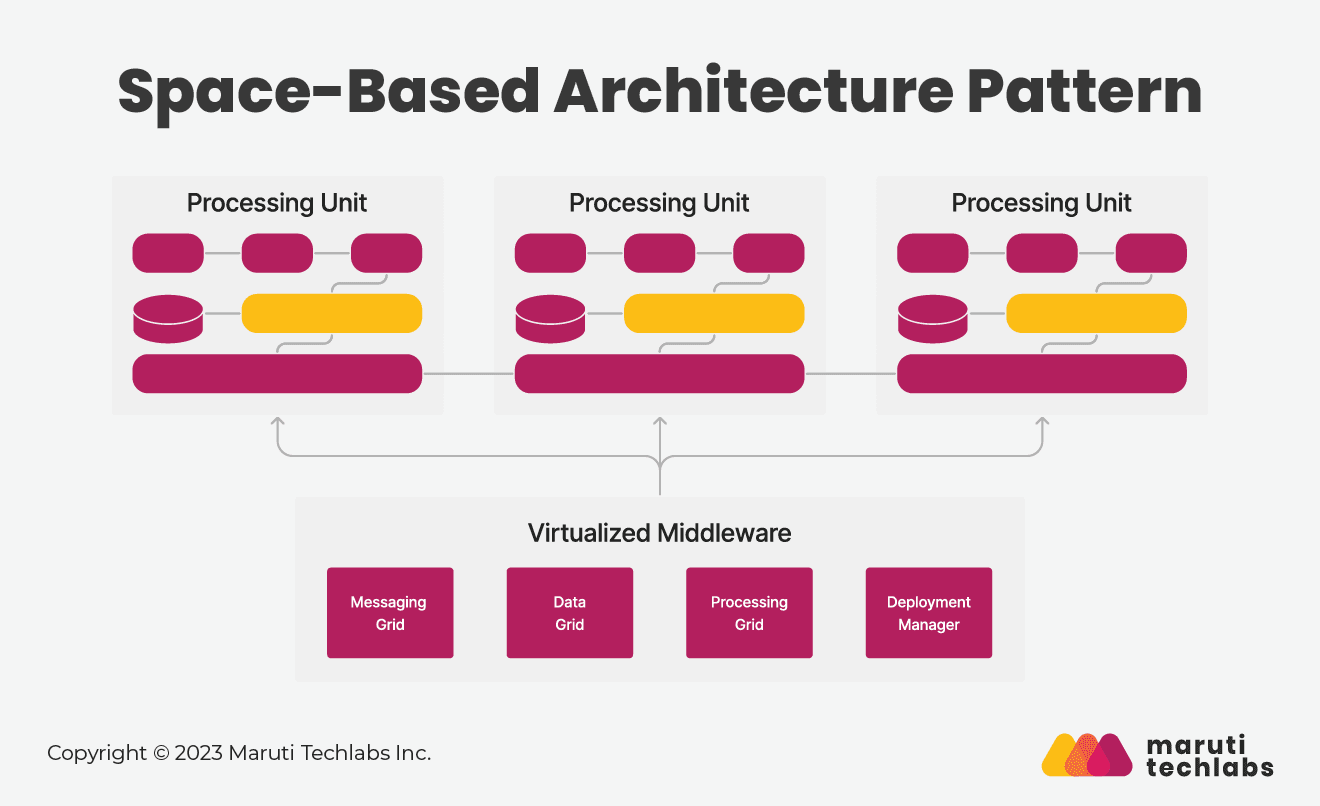
Space-based architecture is specifically designed to handle high loads and unpredictability. It is suitable for achieving linear scalability and high performance. This architecture pattern helps avoid functional collapse under high load by splitting up the processing and storage between multiple servers.
The space-based pattern comprises two primary components –
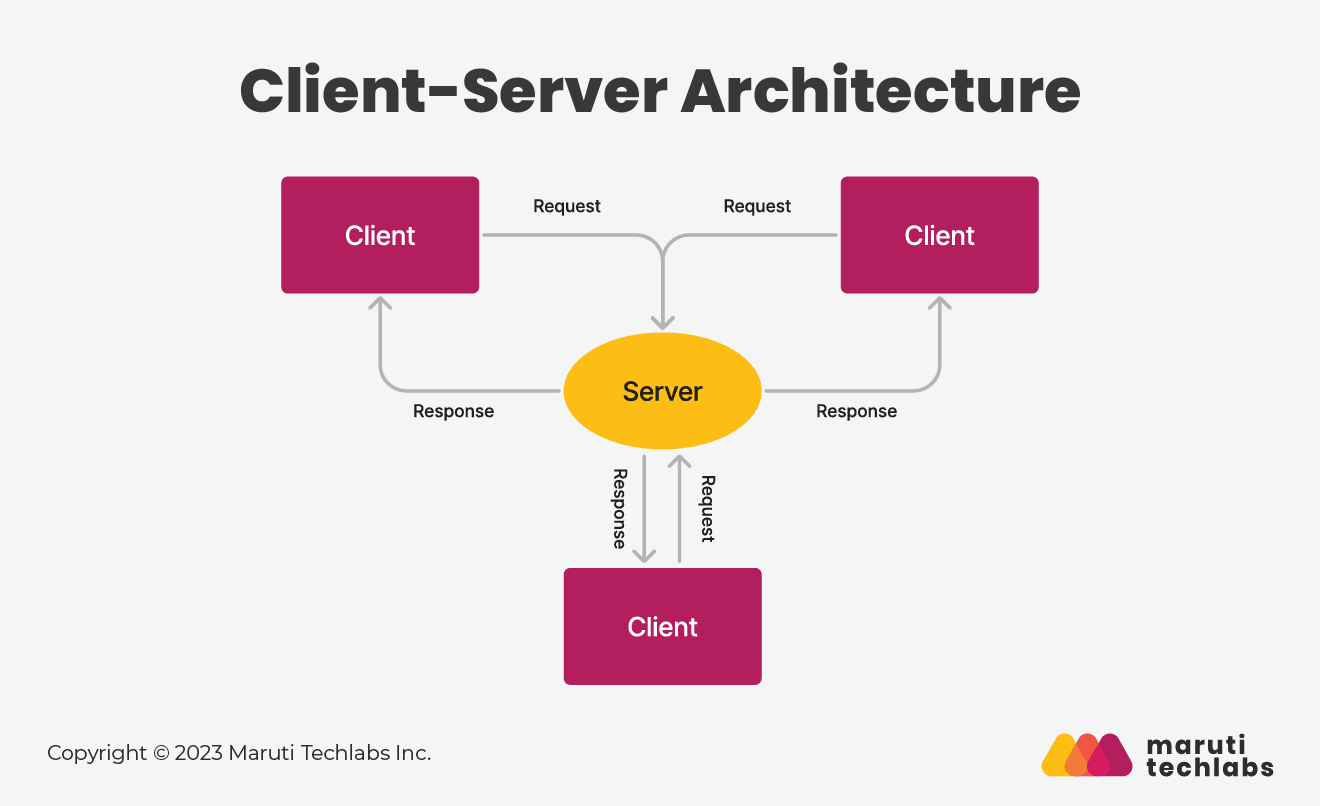
A client-server architecture is a distributed structure with two main components: the client and the server. The client represents the user interface part of the system, while the server is responsible for processing, storing, and managing data and business logic. It may also have a load balancer and network protocols. This architecture facilitates easy communication between the client and the server, which may or may not be on the same network.
Here is how this architecture works:

The master-slave architecture is one of the oldest and simplest architectures. This architecture has one primary database called the 'master' and several secondary databases called 'slaves'.
The master database is the primary storage where all the writing operations occur. It acts like a central coordinator, responsible for distributing tasks, managing resources, and making decisions. The data from the master database is cached into multiple slave servers. The slave servers cannot update or change the data and only handle reading operations.
This architecture effectively enhances reliability, accessibility, readability, and data backup. Imagine multiple requests hitting a single database at the same time. It can quickly get overburdened, resulting in slow processing or even crashing. A master-slave architecture pattern is the perfect solution in this scenario.

Pipe and filter is a simple architectural style that breaks down complex processing into a series of simple, independent components that can be processed simultaneously. The system consists of one or more data sources.
The key components of the pipe-filter architecture are:
Each data source is connected to the data filters via pipes. The pipe pushes the data from one filter to another. The filters process the data as per pre-defined instructions. The data stream follows a unidirectional flow where the result of one filter becomes the input for the next filter. The final output is received at a data sink.

The broker architecture pattern provides a loosely coupled, scalable solution for integrating multiple components in a distributed system. It facilitates the exchange of information among different software components by using a central broker. The broker pattern has three major features: Clients, servers, and brokers.
When clients raise a request, the broker redirects them to a suitable service category for processing. The individual components can interact through remote procedure calls. A broker coordinates communication, such as forwarding requests, transmitting results, and handling exceptions.
Here's a basic overview of how the broker architecture pattern works:
Maruti Techlabs successfully tackled a challenging project for a leading US-based used-car selling platform by implementing an event-driven microservices architecture. As their application evolved, scaling different software components became a huge challenge. With the increasing load, their existing system became prone to crashes and slowdowns.
Our engineering team undertook the challenge of migrating the fully-functional application from a monolithic architecture to event-driven microservices using Docker and Kubernetes. Given the complex structure of the existing application, the technical architects created an architectural design that outlined how each microservice would be set up to scale using Kubernetes.
The implementation of event-driven microservices enabled Uber scaling and independent deployments. Each product team could function with this architecture as a self-reliant autonomous team. Every microservice is self-reliant and has fault tolerance built in.
Results after implementing Event-Driven Microservices -
Software architecture patterns provide proven solutions to common design challenges. Each architectural pattern comes with its unique usage, advantages, and shortcomings. For example, layered architecture provides modularity and separation of components, while microservices enable flexibility and scalability in distributed systems. The client-server pattern allows for a clear separation of responsibilities, and the broker pattern facilitates loose coupling and asynchronous communication.
Each architectural pattern offers a structured approach to building complex software systems. They act as a roadmap for creating well-structured software systems. However, gaining a deeper understanding of these architectural patterns is important to building robust, scalable, and maintainable systems.
At Maruti Techlabs, a software development company New York businesses trust, our pride lies in the expertise of our engineers, possessing in-depth knowledge of architectural patterns. They bring years of experience with custom product development services and are, therefore, adept at choosing the best architectural approach for your software. We have successfully migrated several legacy systems from a monolithic architecture to microservices in a step-by-step manner that ensures zero disruptions.
Understanding the significance of selecting the appropriate architectural pattern is crucial for businesses. Our consultations have a proven track record of helping companies adopt the right software architecture for their software applications, facilitating a better overall user experience.
We ensure your software is built on a solid foundation by conducting a detailed SWOT analysis of the existing system or processes to understand and identify the right software architecture pattern that best addresses your needs. By incorporating the right pattern and tailoring it to meet your specific needs, we build software that stands the test of time and supports the ever-changing demands of the digital landscape.
As your software development company New York partner, we can assist you in determining the right software architecture pattern to address your unique business needs.
1. What is an architectural pattern?
An architectural pattern is a reusable solution addressing a recurring software architecture design problem. It provides a structured approach to organizing a software system's components, modules, and interactions. Different software architecture patterns are designed to meet specific system requirements.
2.What is the importance of software architecture patterns?
Software architecture patterns are powerful tools for developing robust, scalable, and adaptable software systems. It provides a higher-level abstraction that promotes loose coupling among the components. This results in better modularity, flexibility, and high performance in a system.
3.What are the main architectural patterns?
The most well-known software architectural patterns include Layered Architecture, Microservices, Client-Server, Model-View-Controller (MVC), and Event-Driven Architecture. Each pattern addresses specific design challenges and offers advantages regarding separation of concerns, scalability, modifiability, and system organization.


